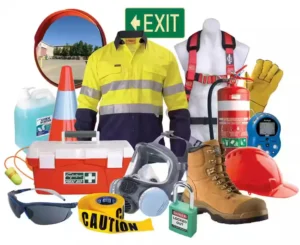Introduction
In any industrial or construction environment, the safety of workers is a top priority. Among all
the personal protective equipment (PPE), safety helmets play a crucial role in protecting
workers from serious head injuries. Whether it’s from falling objects, electrical hazards, or
accidental impacts, the right safety helmet can mean the difference between a close call and a
life-altering injury.
Modern safety helmets are far more advanced than the traditional hard hats of the past. Today,
helmets are designed with industry-specific features, comfort-enhancing technologies, and
compliance with international safety standards. This blog explores the various types of safety
helmets and their specific applications across different industries.
1. Classification of Safety Helmets
Safety helmets can generally be classified based on the type of protection they provide and the
work environment they are intended for. Here are the most common categories:
a. Industrial Safety Helmets (General Purpose)
These are the most widely used helmets in construction and civil engineering. They protect
workers from falling debris, tools, or structural components and are typically made from
materials like high-density polyethylene (HDPE) or acrylonitrile butadiene styrene (ABS).
Applications:
● Construction sites
● Roadwork
● Mining operations
● Manufacturing plants
Many of these helmets come with optional features such as chin straps, ventilation, and
sweatbands for better comfort during long hours of use.
b. Electrical Safety Helmets (Class E Helmets)
These helmets are specially designed to provide insulation against electrical shocks. They are
tested to withstand high voltage and are ideal for workers who deal with live wires or electrical
installations.
Applications:
● Electrical maintenance
● Power generation and transmission
● Utility services
These helmets usually lack ventilation holes to prevent electricity from entering the helmet
structure, which enhances their insulating properties.
c. Welding Helmets
While technically a different category, welding helmets provide full-face protection and often
include features like auto-darkening lenses that adjust according to the intensity of the welding
arc.
Applications:
● Welding shops
● Shipbuilding
● Fabrication workshops
These helmets are essential for protecting the face and eyes from ultraviolet and infrared rays,
sparks, and flying metal fragments.
d. Bump Caps
Bump caps are lightweight head protectors that are not meant for heavy-duty impact but are
useful in environments where workers are likely to bump their heads on low-hanging objects or
machinery.
Applications:
● Warehouses
● Maintenance tasks
● Food processing units
These are not certified for industrial use where falling objects are a risk, but they are excellent
for reducing minor injuries in tight spaces.
2. Key Features to Look for in Safety Helmets
When selecting a safety helmet, it’s important to understand the specific requirements of the job
and match them with helmet features. Here are some essential features to consider:
a. Material and Durability
Helmets made from ABS or HDPE provide excellent impact resistance and are durable under
extreme weather conditions. Polycarbonate helmets offer higher resistance to heat and UV
exposure.
b. Suspension System
A good internal suspension system helps in distributing the impact force evenly across the
head, reducing the chance of injury. Look for helmets with adjustable straps and cushioned
interiors.
c. Ventilation and Comfort
For long work shifts, ventilation slots can help keep the head cool. Moisture-wicking sweatbands
and ergonomic design also improve comfort and worker compliance.
d. Attachments and Compatibility
Some helmets come with slots for additional PPE like face shields, ear muffs, or welding visors.
This is ideal for workers exposed to multiple hazards.
3. Industry-Specific Helmet Applications
Each industry has its unique hazards, which is why safety helmet specifications often vary
depending on the work environment.
Construction Industry
Helmets used here must offer impact resistance, penetration protection, and comfort for long
hours. A visor or ear protection may also be added for tasks involving noise and dust.
Electrical Industry
Insulated helmets are critical. These helmets must meet electrical resistance standards and
have no metal parts that can conduct electricity.
Oil and Gas Industry
Workers here need helmets that can withstand high temperatures and are compatible with
flame-retardant accessories. Reflective stickers are often used for visibility in low-light
conditions.
Chemical Industry
Safety helmets in chemical plants may need resistance to corrosive substances and
compatibility with full-face protection systems to guard against splashes.
Conclusion
The importance of choosing the right type of safety helmet cannot be overstated. Each work
environment presents different risks, and using the wrong kind of protection can lead to serious
injury or even fatality. From basic bump caps to specialized helmets for high-voltage
environments, understanding the application and key features of each type ensures that
workers stay safe and productive.
For companies seeking safety helmets in Agra, selecting a trusted supplier that offers certified
and industry-compliant products is essential. SA Components, a recognized name in safety
equipment, serves as an authorized supplier of safety helmets with a range of models designed
to meet specific industrial needs. Their products blend protection, durability, and
comfort—ensuring peace of mind for employers and employees alike.
By investing in the right head protection, industries not only comply with safety regulations but
also foster a culture of care and responsibility, where workers feel valued and protected.



